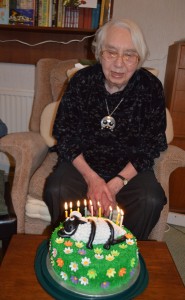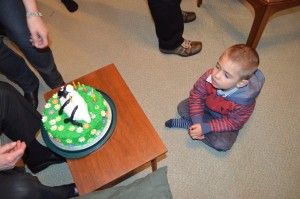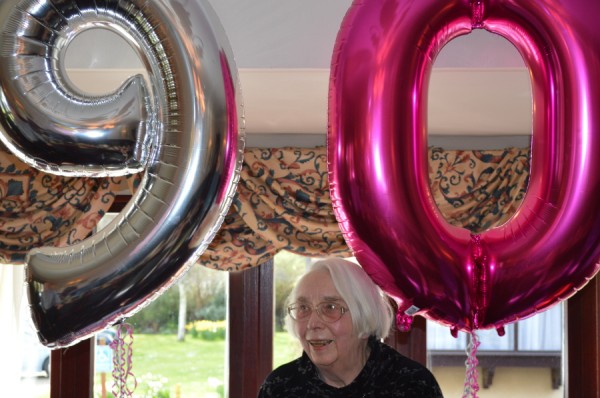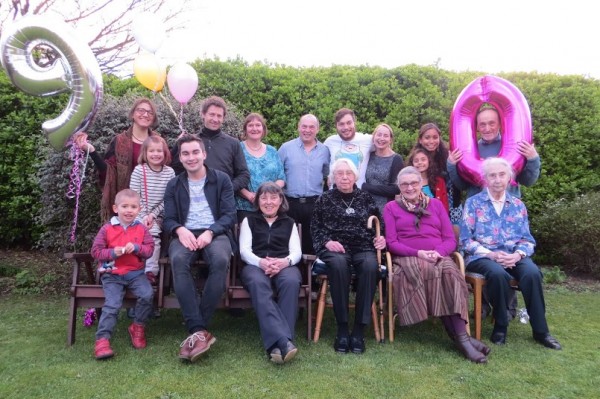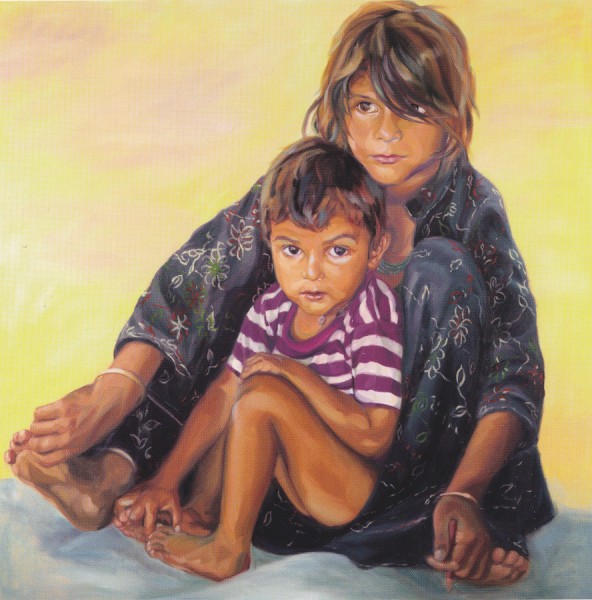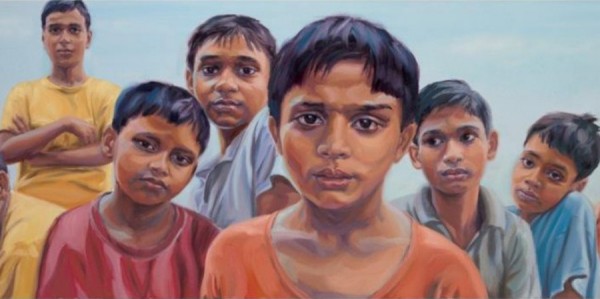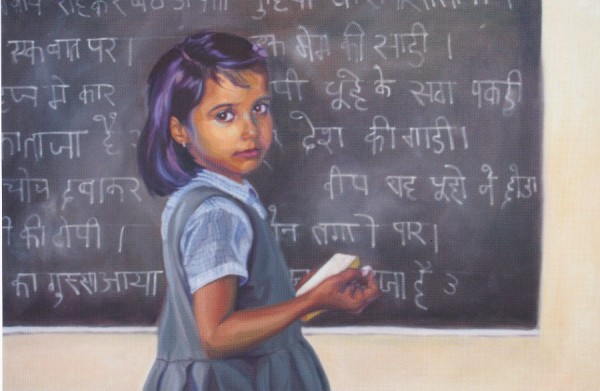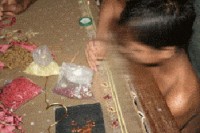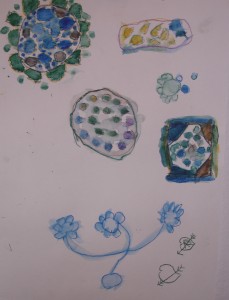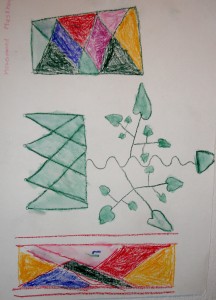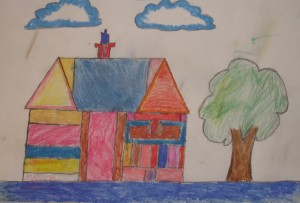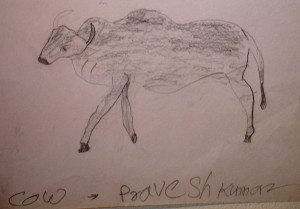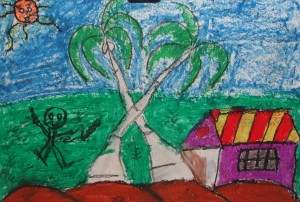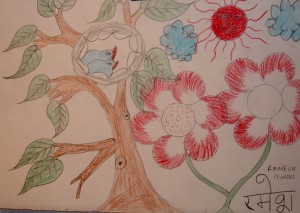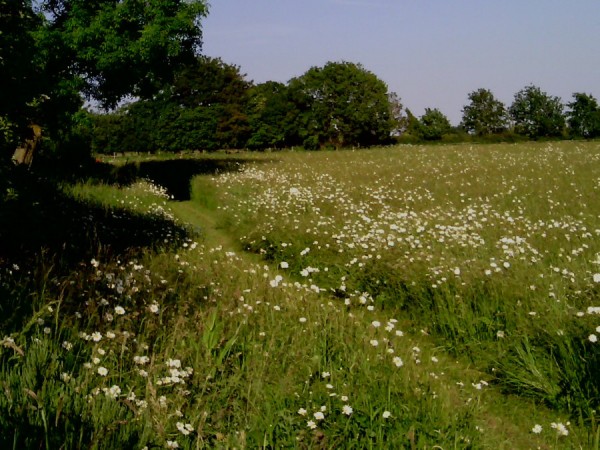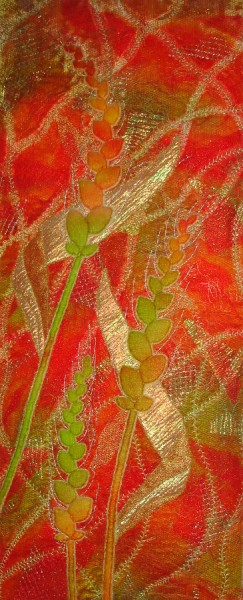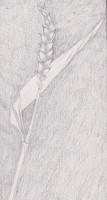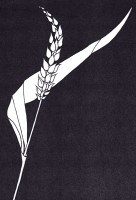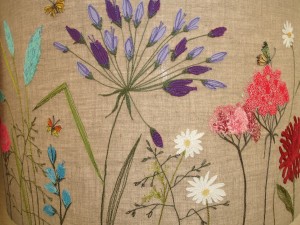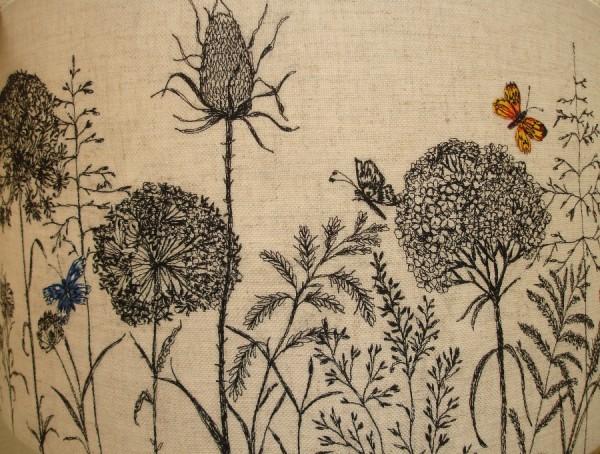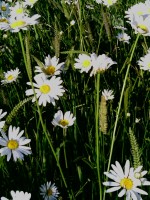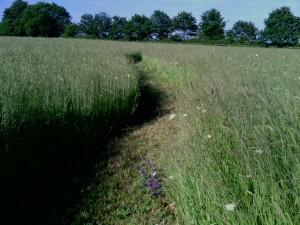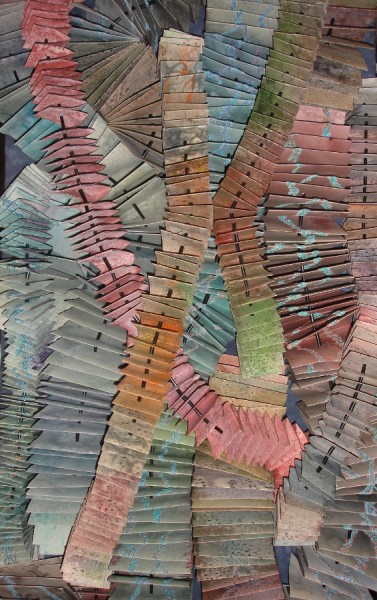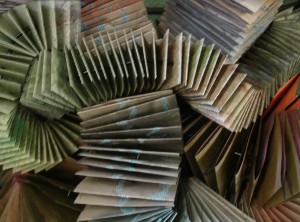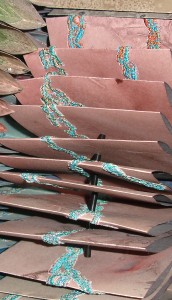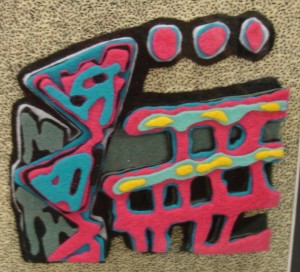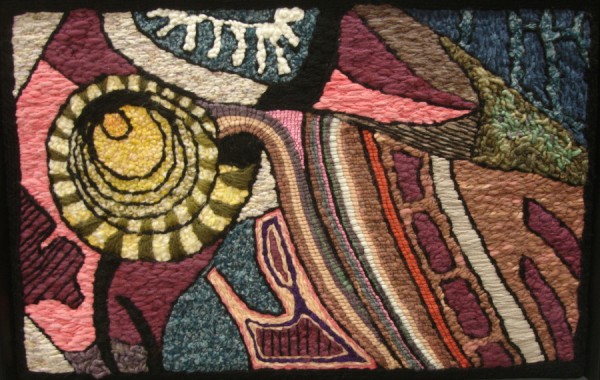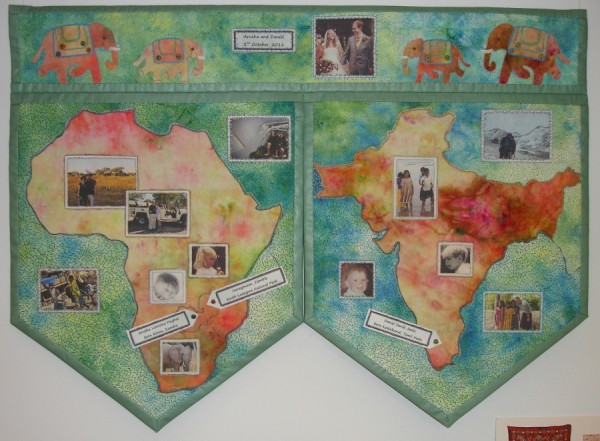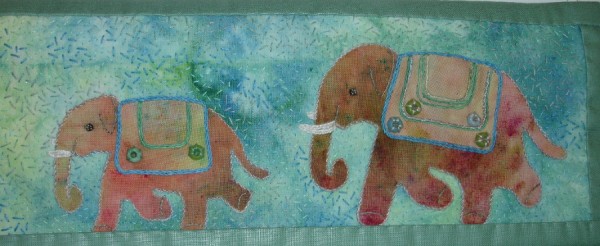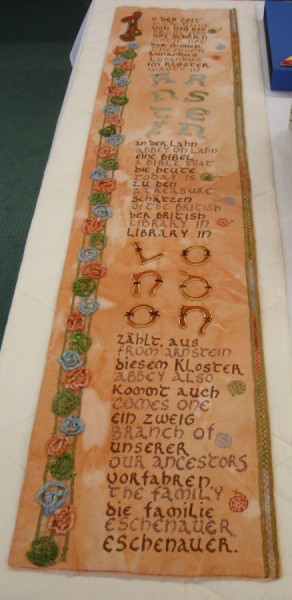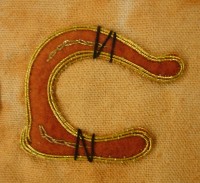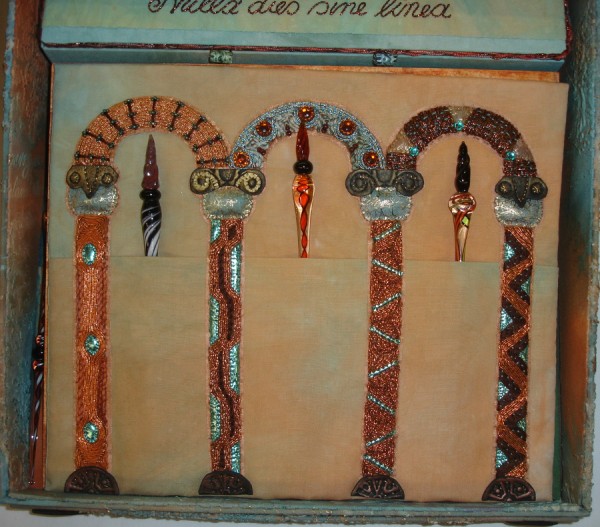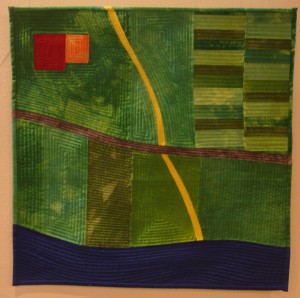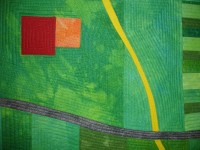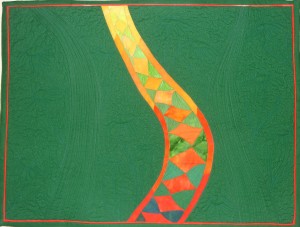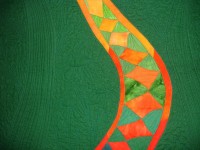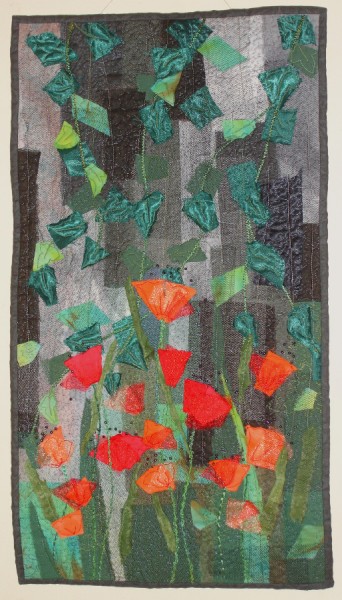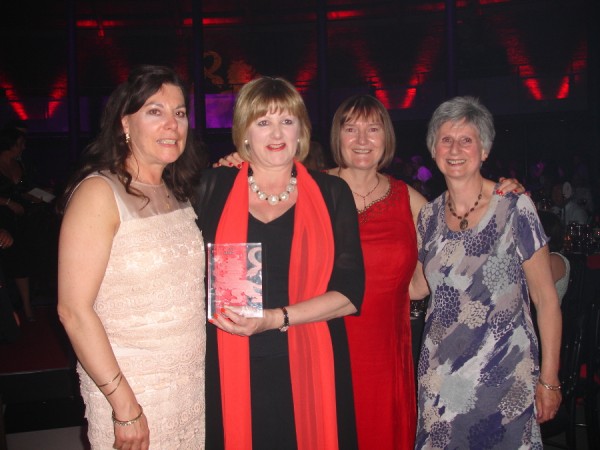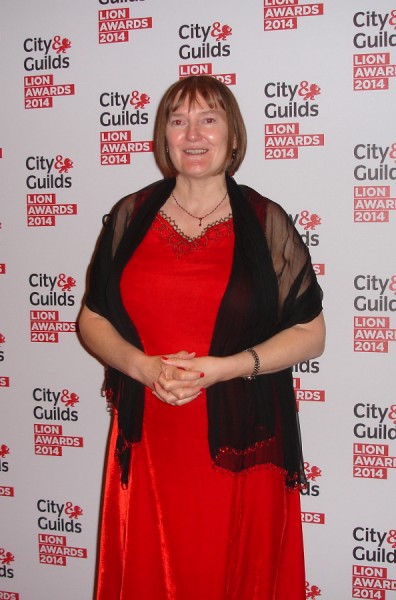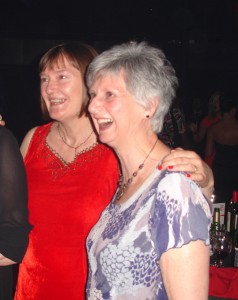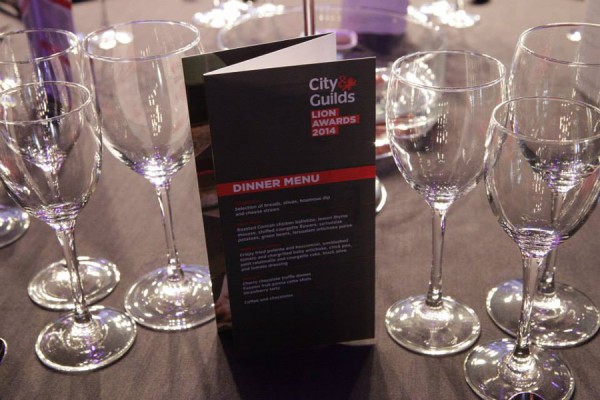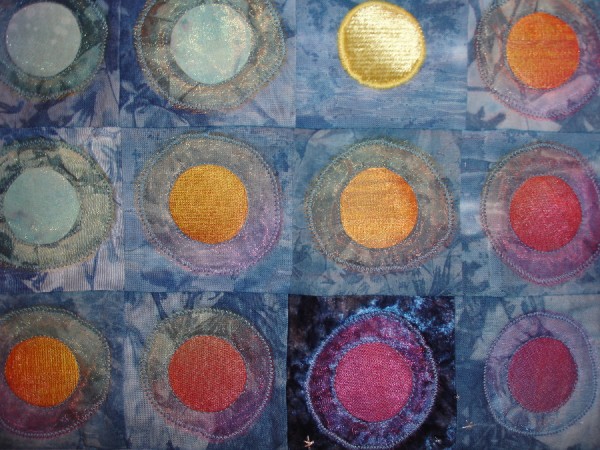
Sandra Smith, The Cloths of Heaven, Miniature Quilts (detail) I loved the subtle colours and the simplicity of this.
What a feast for the eyes at the Festival of Quilts. The feet have just about recovered from a bad choice of footwear for a day of standing and shuffling about, and the photos are finally uploaded. This was the first time I’ve been to the festival, and I really under-estimated how much there would be to see. It took a whole day just to look at the competition quilts – there were about a thousand just of those. I ran out of time for the curated exhibitions and there was no time at all for the traders stalls so the bank balance didn’t suffer, unlike Ally Pally. Definitely two days next year.
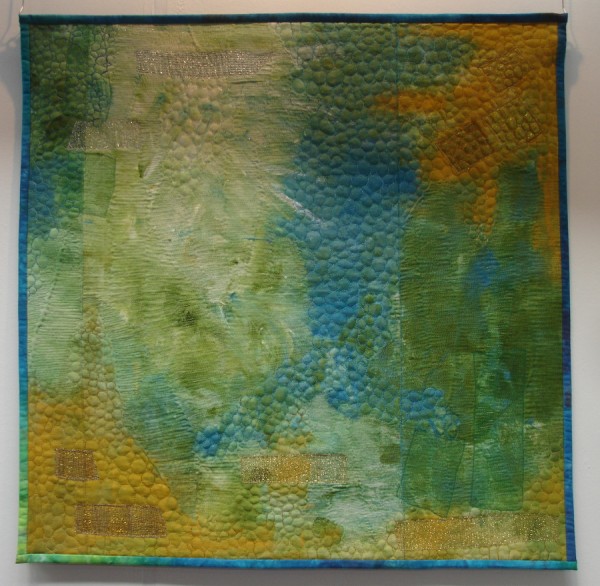
Inneke Van Unen, Emotion in Art, Route du vin blanc. This was one of the few non-competition galleries I did get to see. I bought her catalogue for the exhibition which was worth every penny for the lovely colours. I also enjoyed chatting to her.
I found my first visit to the FOQ really friendly. As well as meeting up with friends and familiar acquaintances, I had some really nice conversations with various unknown people. For example I had an hour to wait between my friend’s train time and my own, and as I was sitting in the bar a lovely stranger came up and asked if I’d like a conversation as she was on her own too. How un-British, and how nice! I didn’t write down a name so it has slipped from my memory. If that’s you, then do reply here and say hello!
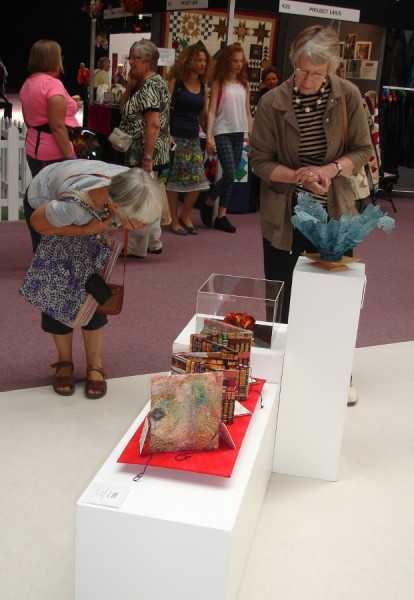 My 3D ‘Fossil Rock’ was entered in the Quilt Creations category. I was disappointed with how it was displayed – it’s a tiny little thing that was displayed at knee-height. When people are used to looking upwards at huge quilts, and if they have tired feet, creaky knees or shopping bags on their shoulder, are they really going to bother to get down to knee-height to look at something so small? It’s the first time I’ve entered anything into a competition so I wasn’t specific about wanting it shown at eye-level – I thought it would have been self-evident. Oh well, you live and learn. Here’s someone who did bother to crouch down – thank you, unknown lady!
My 3D ‘Fossil Rock’ was entered in the Quilt Creations category. I was disappointed with how it was displayed – it’s a tiny little thing that was displayed at knee-height. When people are used to looking upwards at huge quilts, and if they have tired feet, creaky knees or shopping bags on their shoulder, are they really going to bother to get down to knee-height to look at something so small? It’s the first time I’ve entered anything into a competition so I wasn’t specific about wanting it shown at eye-level – I thought it would have been self-evident. Oh well, you live and learn. Here’s someone who did bother to crouch down – thank you, unknown lady!
Most of my favourites came from the categories of Art Quilts, Contemporary Quilts and the Fine Art Quiltmasters (I don’t understand the distinctions between these – can anyone enlighten me?) The rest of this post shows some of my favourites (I’ve saved the best for last) but first there were some traditional ones that I liked too. My favourite traditional quilts didn’t win, but they easily could have been winners in my humble opinion.
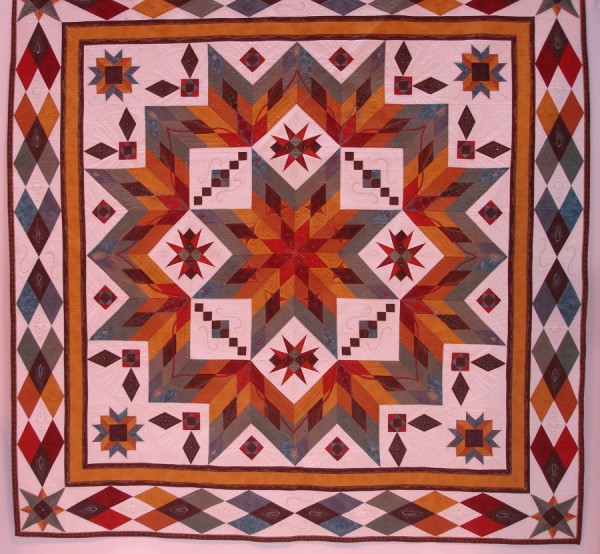
Annelise Littlefair, Kutch Diamonds, Traditional Quilts
I love the quilt above by Annelise Littlefair. The closer you get to it, the more exquisite detail emerges (see below). The machine-quilting is done very delicately. Apparently this was a winning quilt in a previous quilt competition (Sandown?) and I can see why. It would have been my choice of winner of the traditional category this time too.
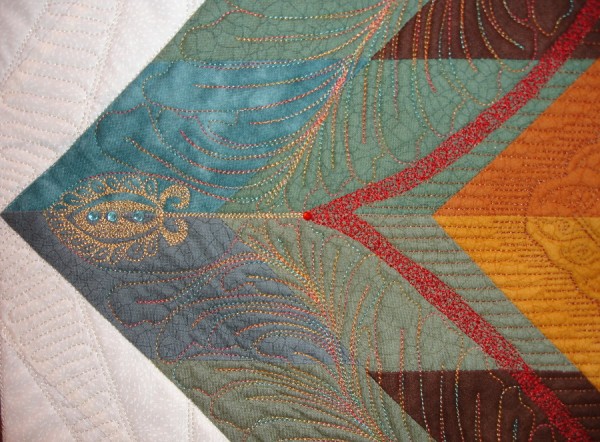
Annelise Littlefair, detail 1
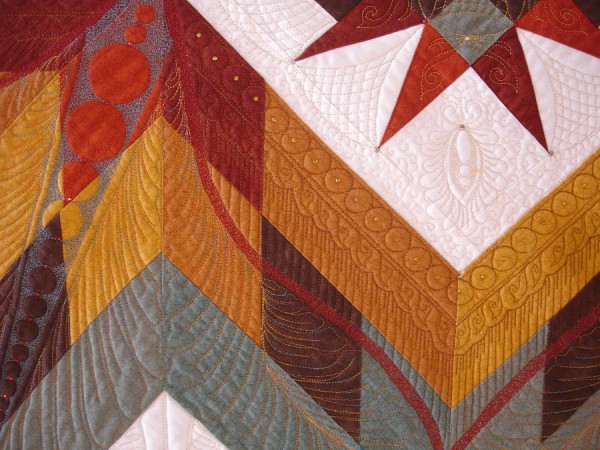
Annelise Littlefair, detail 2
I loved this traditional one below, with beautifully stitched applique. It could have come straight out of Averil Colby. I can picture a group of people sitting round the quilt frame stitching it, in a quilting bee in ‘Little House on the Prairie’. Shame the photo makes it look pink – it was a lovely crisp white.
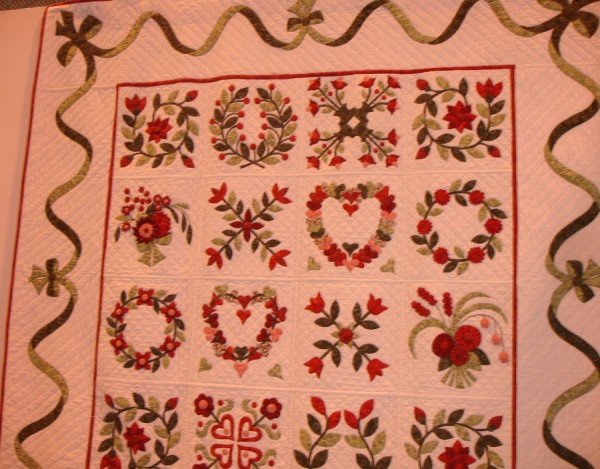
Sue Horner, My Baltimore Quilt, (Traditional Quilts)
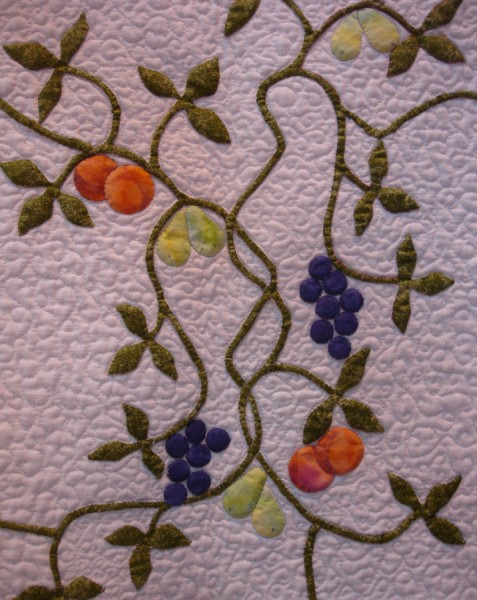
Simon Henry, 1850, Traditional Quilts
Here are two more I liked in the traditional category. On the left, a lovely applique by Simon Henry.
Below: a piece by Laura Armiraglio. I did wonder if it might have been more ‘in place’ in the Pictorial category, but as I mentioned before I don’t understand the categories so what do I know??? It’s lovely anyway.
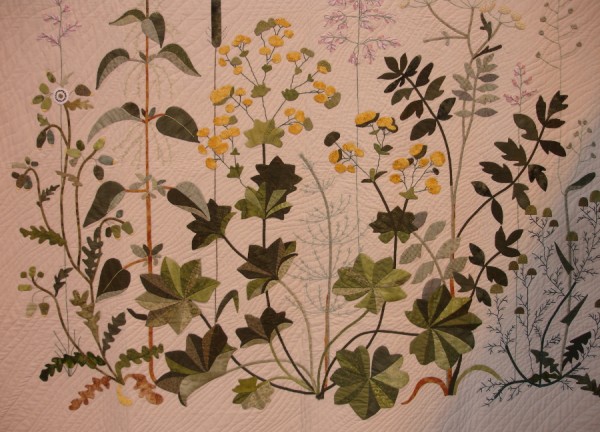
Laura Armiraglio, Omaggion a Gerda Bengtsson
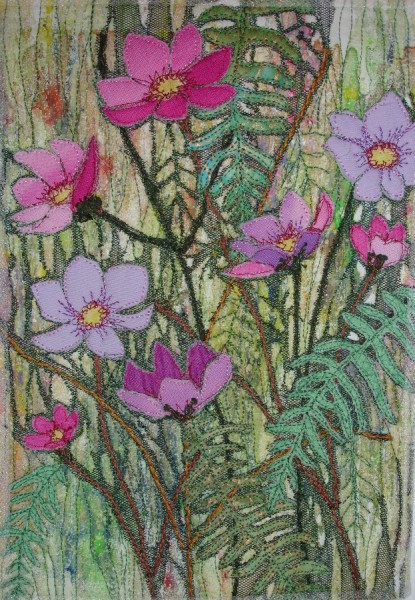
Penny Armitage, Cosmos, Miniature Quilts
And here are some that struck me from the other categories.
Here’s another ‘pretty’ one by Penny Armitage in the Miniature Quilts category, which I think is a machine cut-away technique (beautifully done).
I liked the colours and the freshness of Yvonne Brown’s Tulip Time (below). I particularly liked the way the cut-away sections echoed the other bands of tulips.
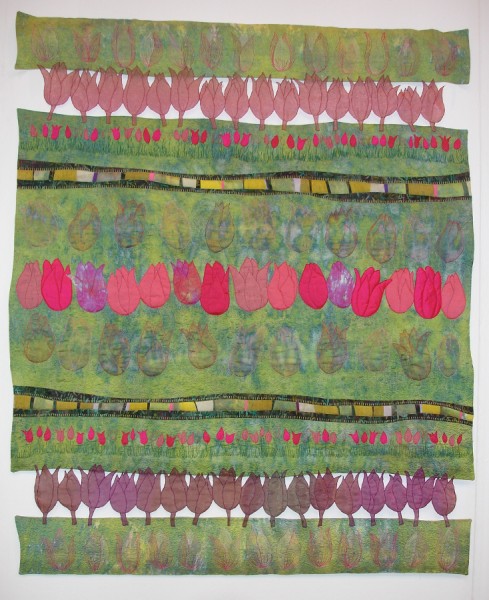
Yvonne Brown, Tulip Time, Quilters Guild Challenge Winner
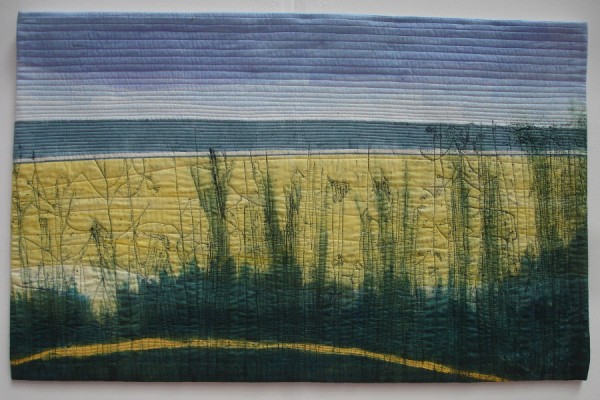
Cherry Vernon-Harcourt, Holkham Beach
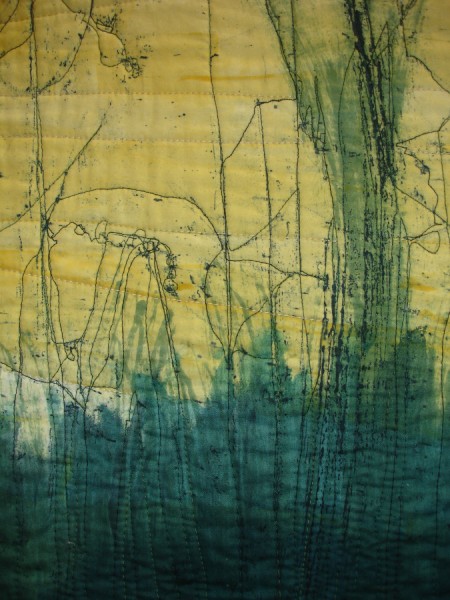
Cherry Vernon-Harcourt, Holkham Beach (detail)
Definitely a case of ‘less is more’ here.
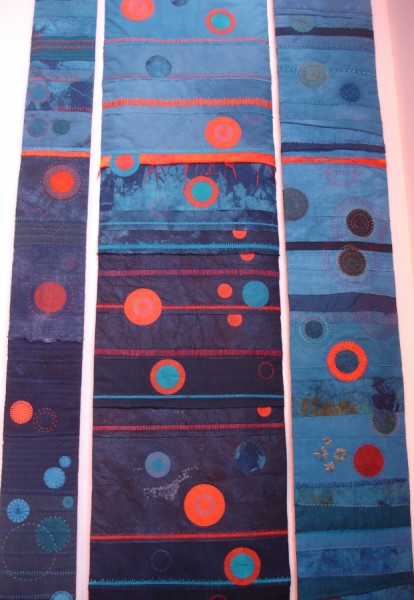
Two-Plus-One, Shared Abstraction, Group Quilts.
I like the contrasting colour-scheme of this quilt by ‘Two-Plus-One’, and the simple restrained stitching. I also liked the mat texture, which included paper as well as fabric.
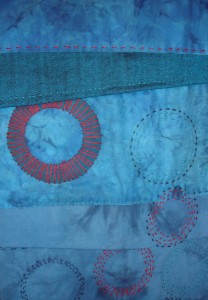
Two-Plus-One, detail
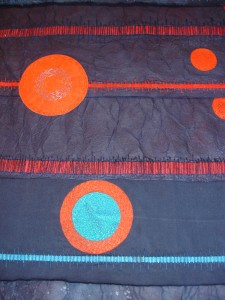
Two-Plus-One, detail 2
I read a complaint in someone else’s blog that ‘the arty set’ are taking over the Festival of Quilts. No doubt some of my choices would have her full disapproval, but hopefully there’s room in the quilt and textile art world for the whole spectum, from ‘arty’ through to ‘cutesy’, and all shades in between.
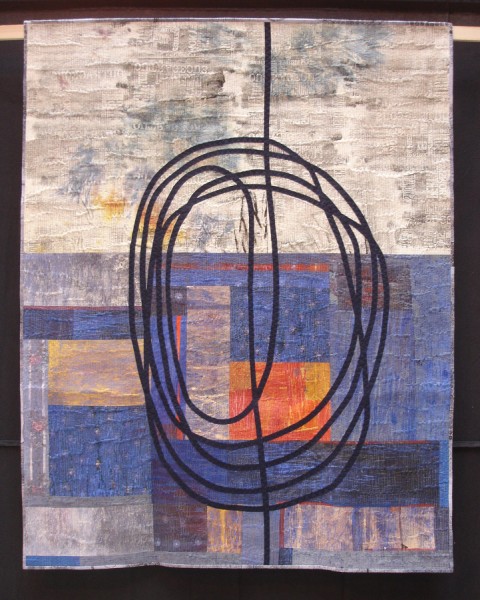
Yvonne Kervinen, Urban Landscape, Art Quilts

Louise Peers, Bushfire, Art Quilts (Highly Commended)
I loved the subtle colour-gradations of ‘Bushfire’ above. I’m not sure if the background was painted or shibori-dyed, but it was lovely, with more trees appliqued on top. I love the tiny little green shoot on the right – the piece could have been called ‘hope’.
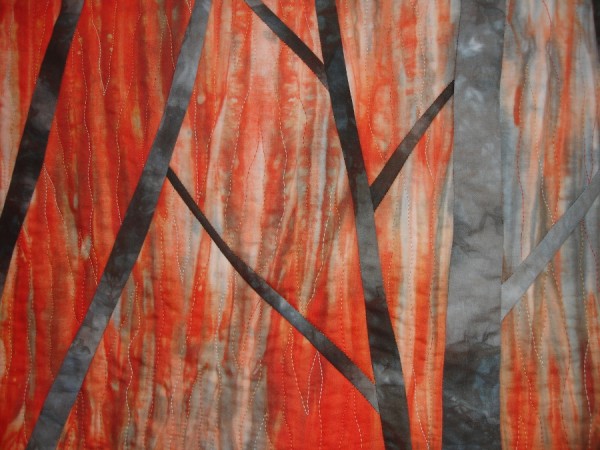
Louise Peers (detail)
I had to put my hands in my pockets to avoid stroking the quilt below.
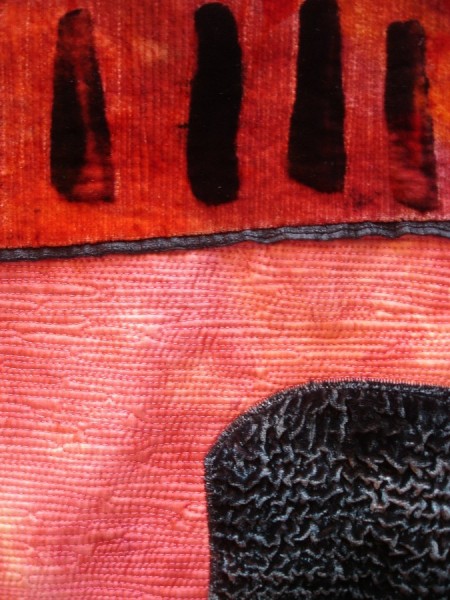
Cecilia Gonzalez Desedamas, The Difference, Art Quilts (detail)
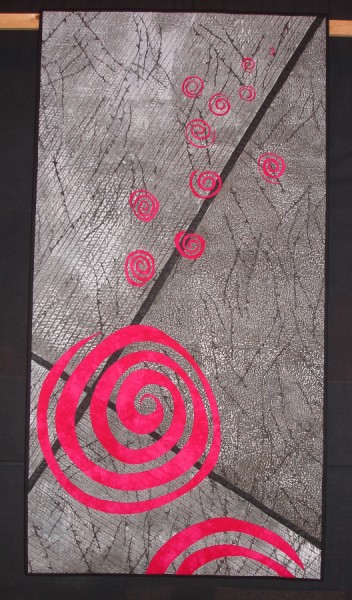
Maggie Birchenough, Rose 4, Art Quilts (Judges Choice)
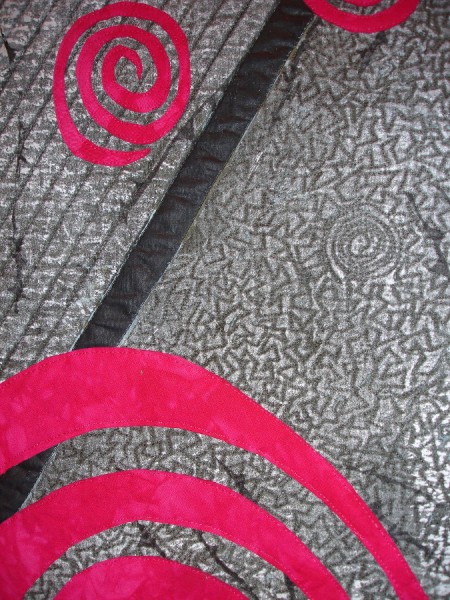
Maggie Birchenough (detail)
I loved the very restricted colour-palette of this one by Maggie Birchenough, and the textured detail in the stitching.
‘Wrapped In Colour’ by Meredith McCarthy (below) is a very different kind of quilt, which glowed as the light shone through it. It reminded me of old stained glass windows.
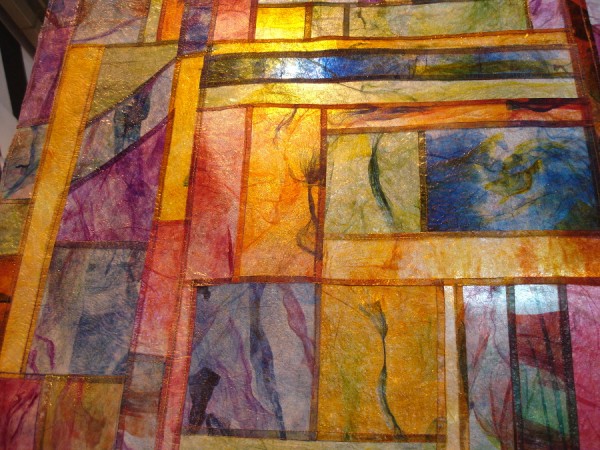
Meredith McCarthy, Wrapped in Colour, Art Quilts
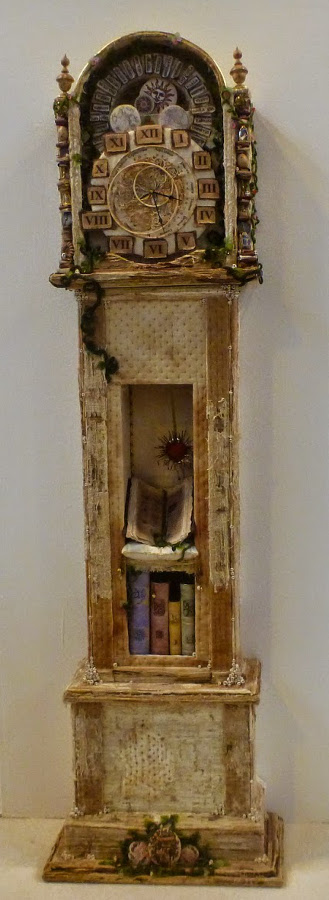
Kate Crossley, Clock, Quilt Creations
And here’s my favourite, Kate Crossley’s ‘Clock’ which had the unanimous vote of all the judges to win the Quilt Creations category. Of all the things I saw at the show, this is the one that I would be most pleased to have created myself. It’s a wonderful concept as a way to make a textile statement on ‘time’. It’s completely bonkers, stuffed with detail, and beautifully stitched. The closer you look, the more it draws you in to study the detail (see below).
Judging by the people crowding round to photograph it, this was a popular choice by the Judges. Look at the photo at the bottom – it shows how captivated people are by this piece.
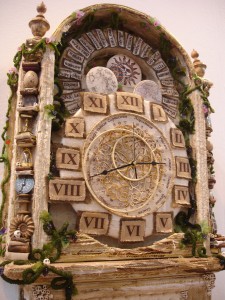
Kate Crossley, Clock, detail 1
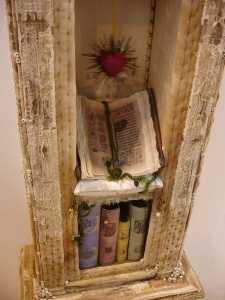
Kate Crossley, Clock, detail 3
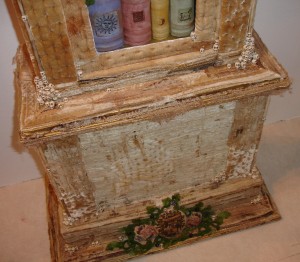
Kate Crossley, Clock, detail 2
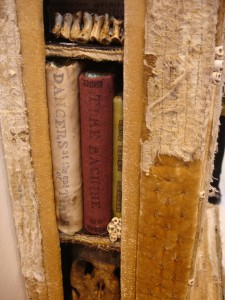
Kate Crossley, Clock, detail 4
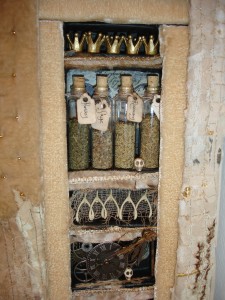
Kate Crossley, Clock, detail 5
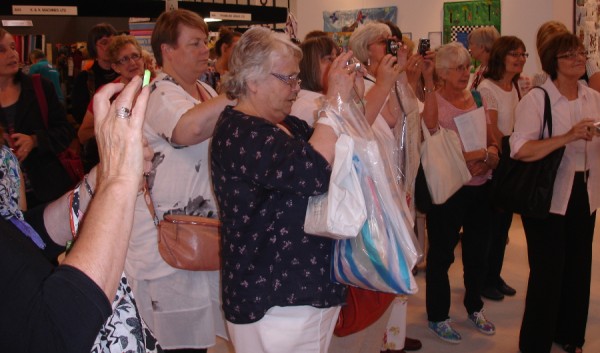
A constant crowd of people to photograph Kate Crossley’s Clock
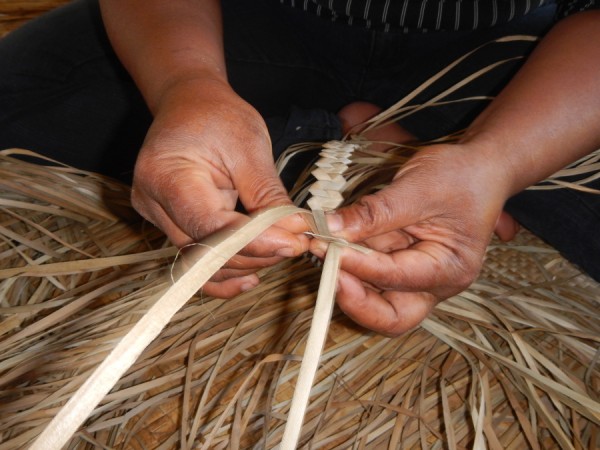 I promised to share some photos here of palm-leaf weaving in Tonga and Fiji. I was there the summer before last, on the trip of a lifetime based around a kayak-camping trip between some far remote Tongan islands. Memories of this were re-kindled a couple of weeks ago when I went on a twining course with Mary Crabb.
I promised to share some photos here of palm-leaf weaving in Tonga and Fiji. I was there the summer before last, on the trip of a lifetime based around a kayak-camping trip between some far remote Tongan islands. Memories of this were re-kindled a couple of weeks ago when I went on a twining course with Mary Crabb.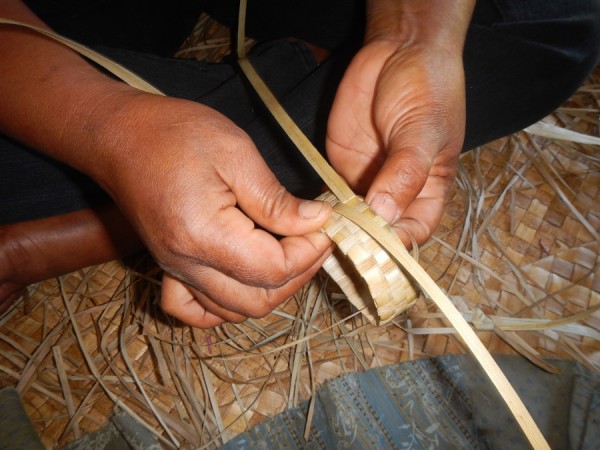
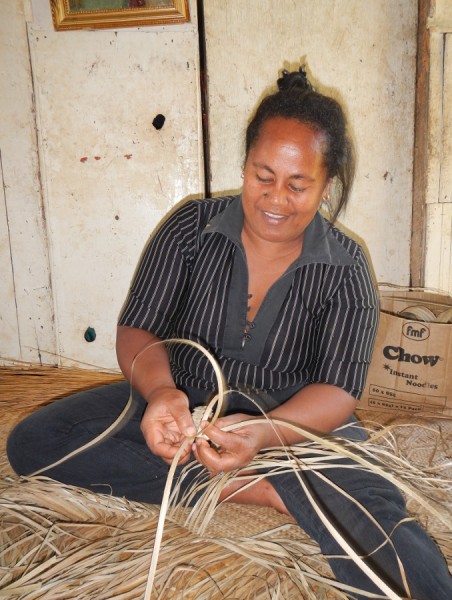
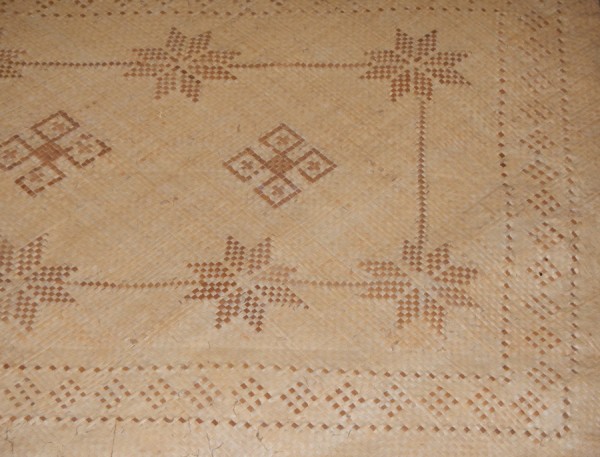 Life in Tonga moves at a much gentler pace than here in the UK. Weaving mats is a chance to sit and gossip with friends. I heard the most heavenly singing coming from this Church hall, and wandered in to find these women sitting weaving. They welcomed me in to sit with them while they worked and sang.
Life in Tonga moves at a much gentler pace than here in the UK. Weaving mats is a chance to sit and gossip with friends. I heard the most heavenly singing coming from this Church hall, and wandered in to find these women sitting weaving. They welcomed me in to sit with them while they worked and sang.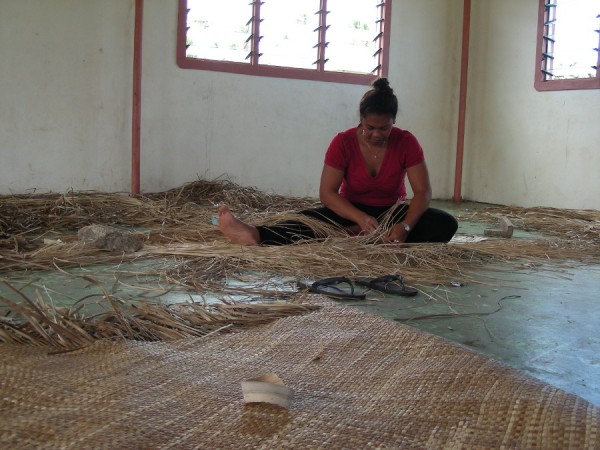
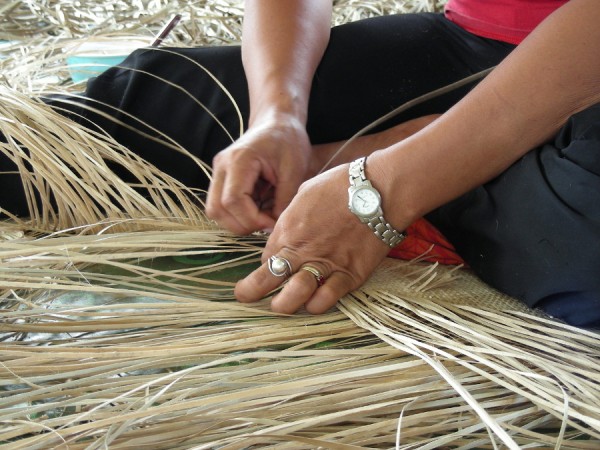 And in case you wondered how we got around in Tonga, here’s how. That’s my brother and husband in one of the kayaks, loaded with tents, water, cooking pot and frying pan.
And in case you wondered how we got around in Tonga, here’s how. That’s my brother and husband in one of the kayaks, loaded with tents, water, cooking pot and frying pan.










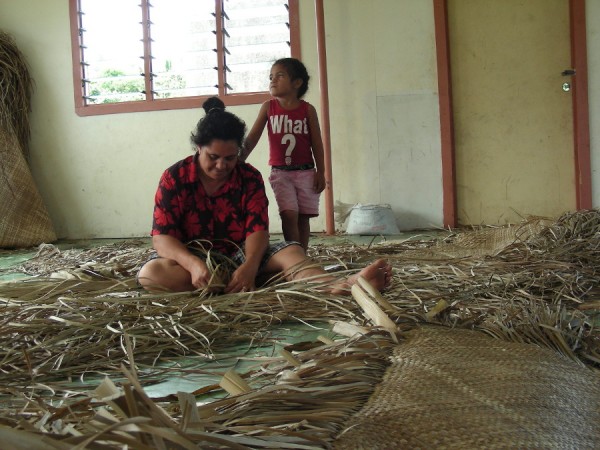

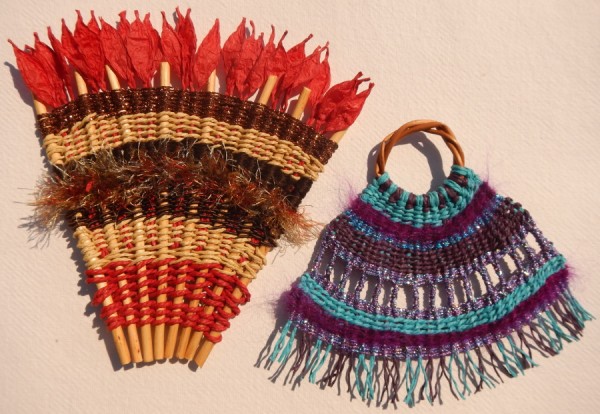
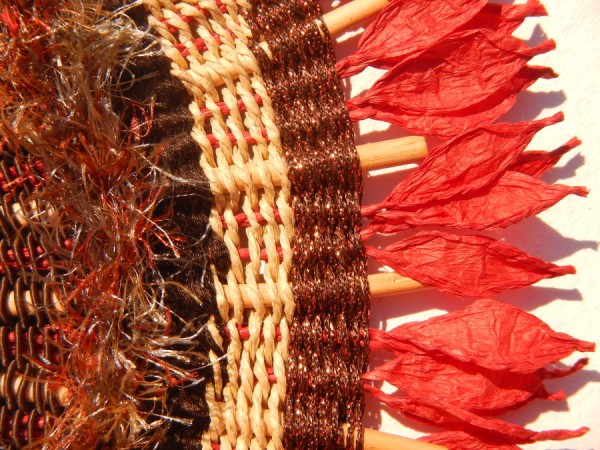
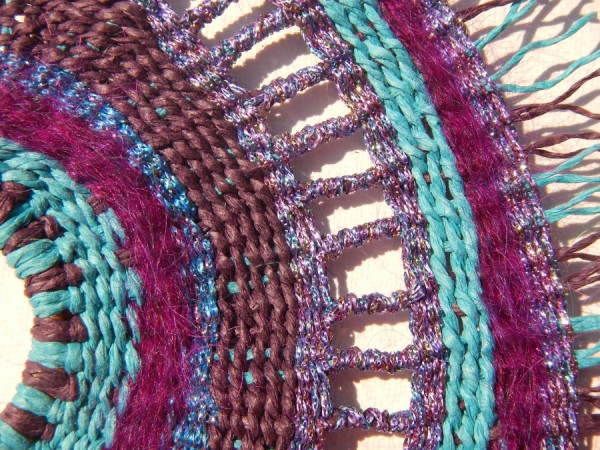
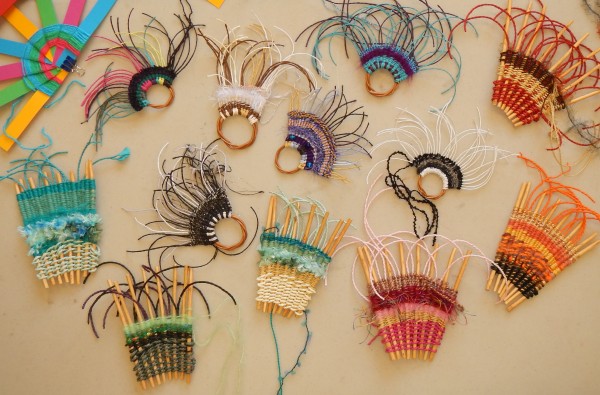
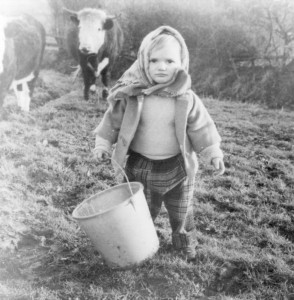
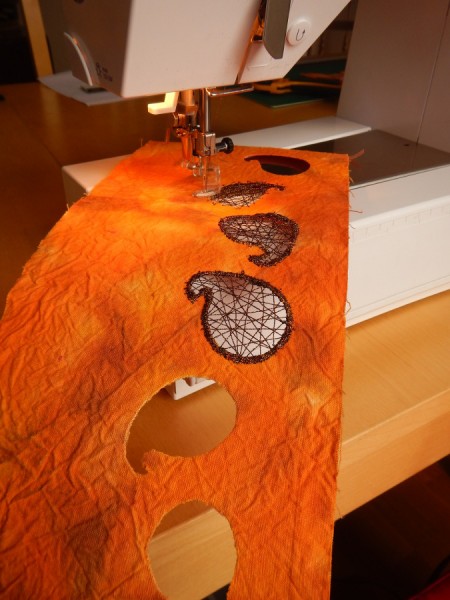
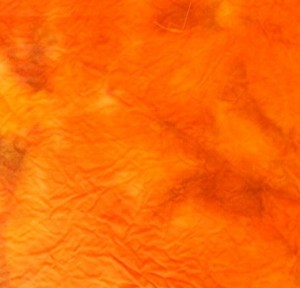
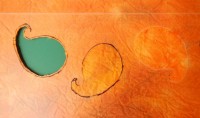
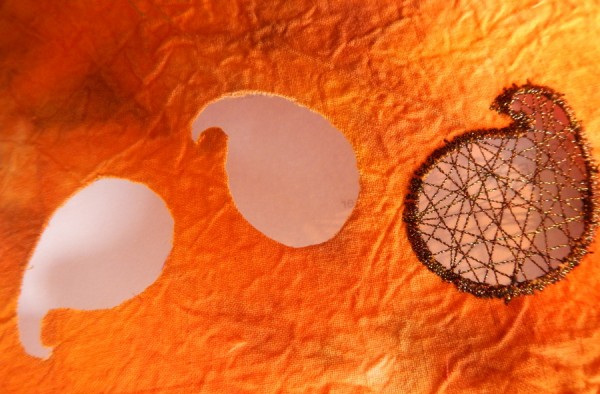
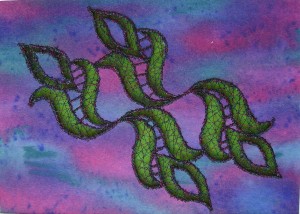
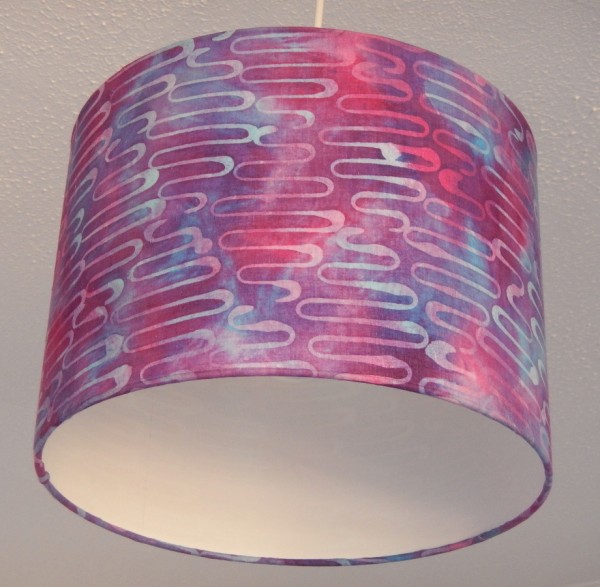
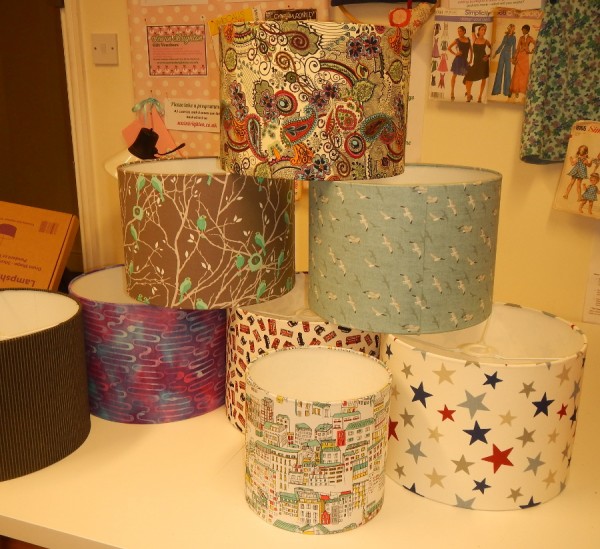
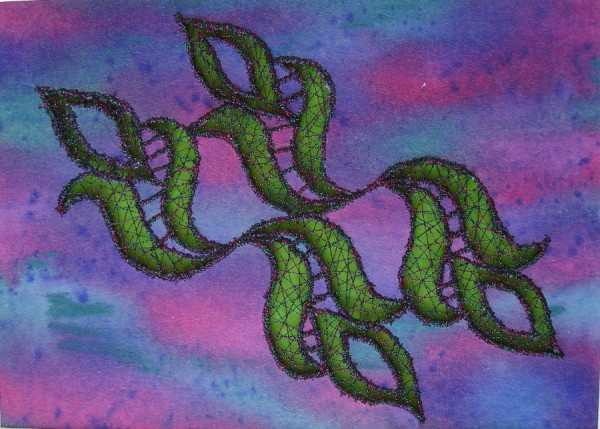
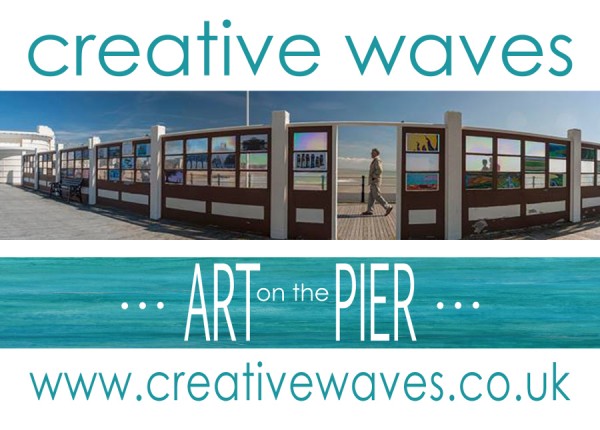
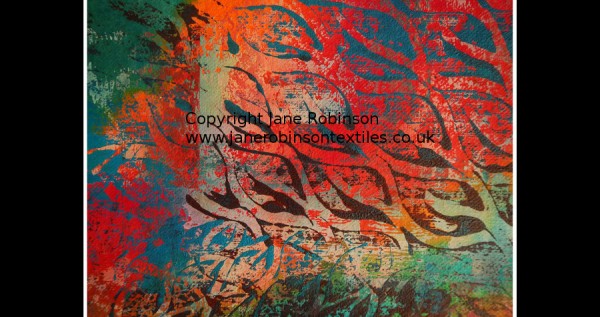
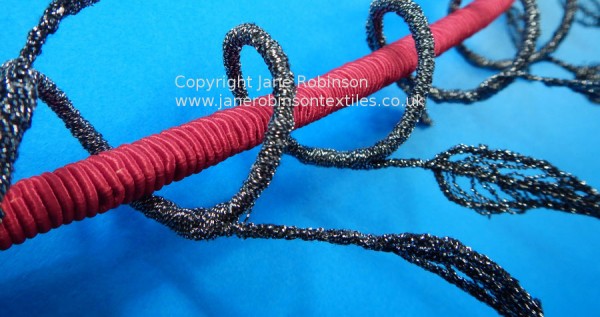
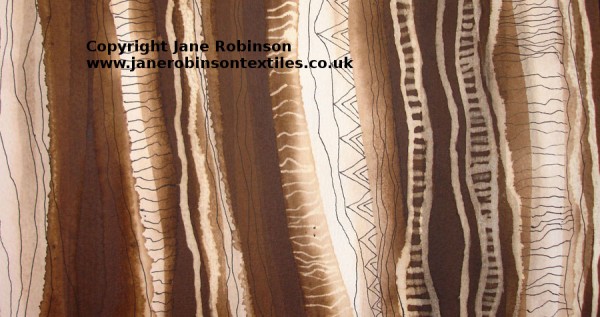
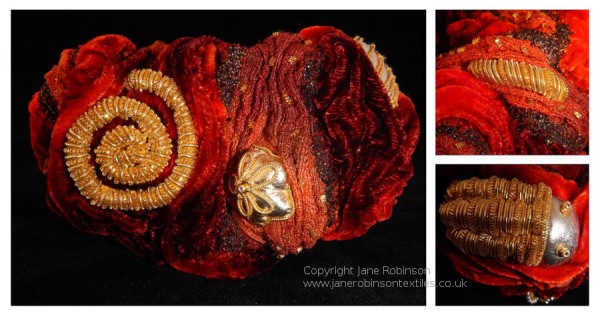
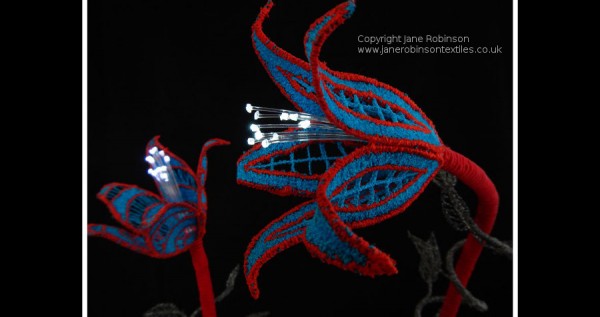
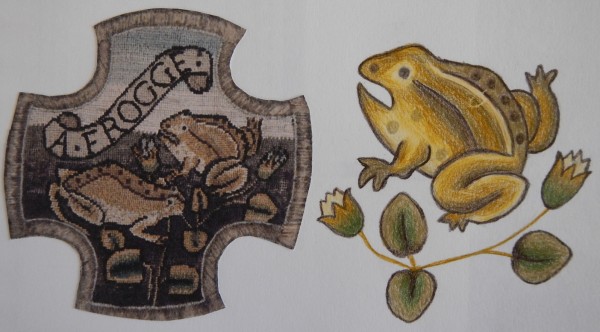

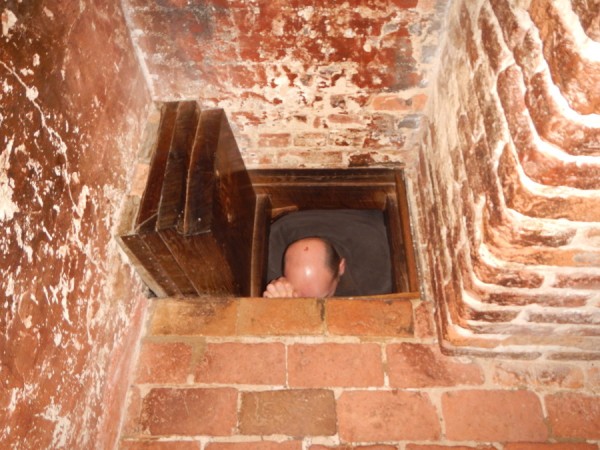
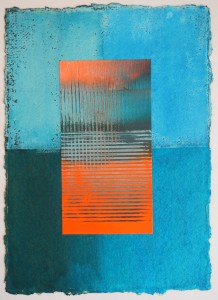
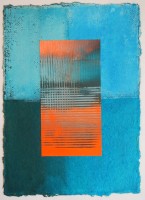
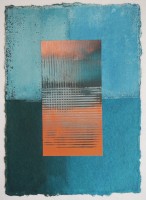
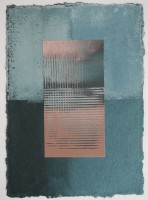
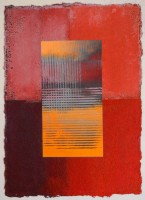
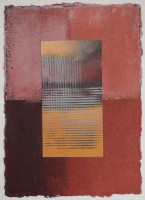
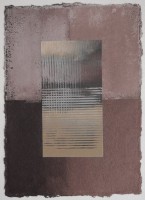
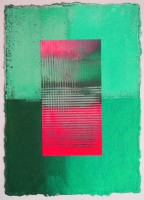
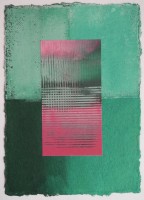
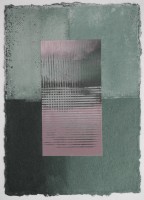
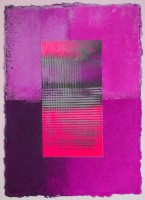
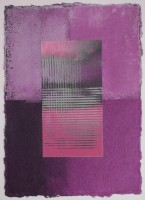
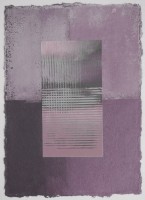
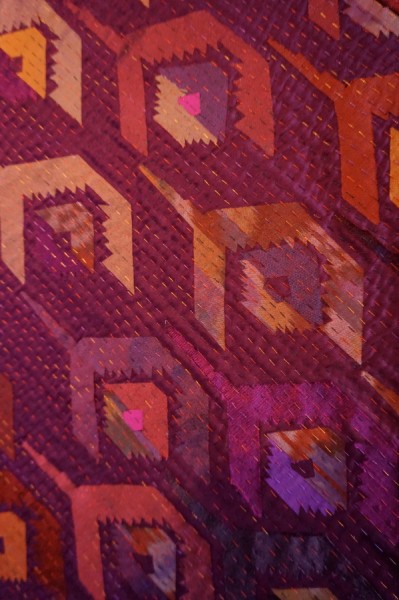
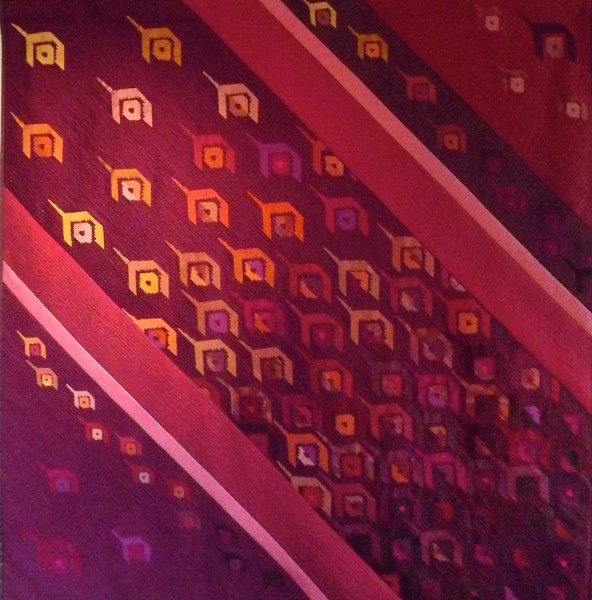
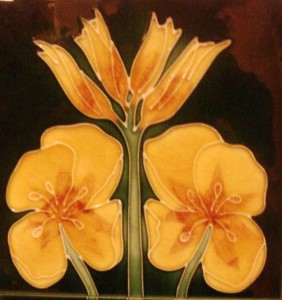
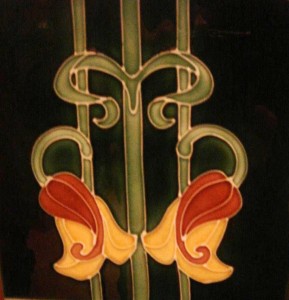
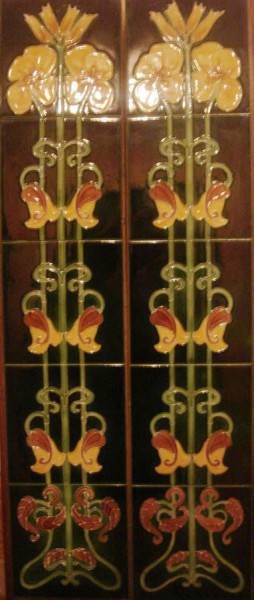
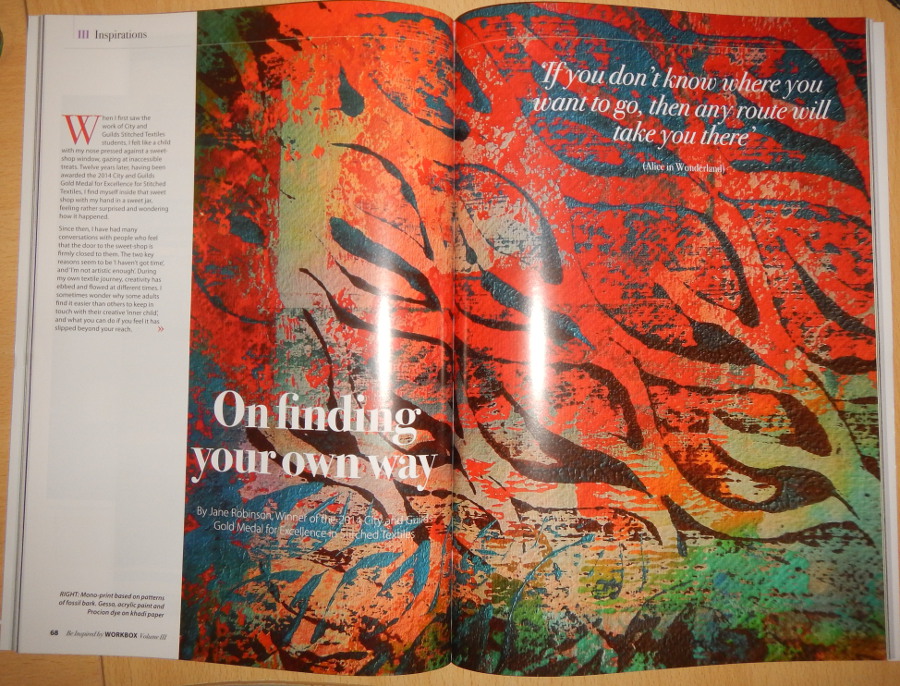
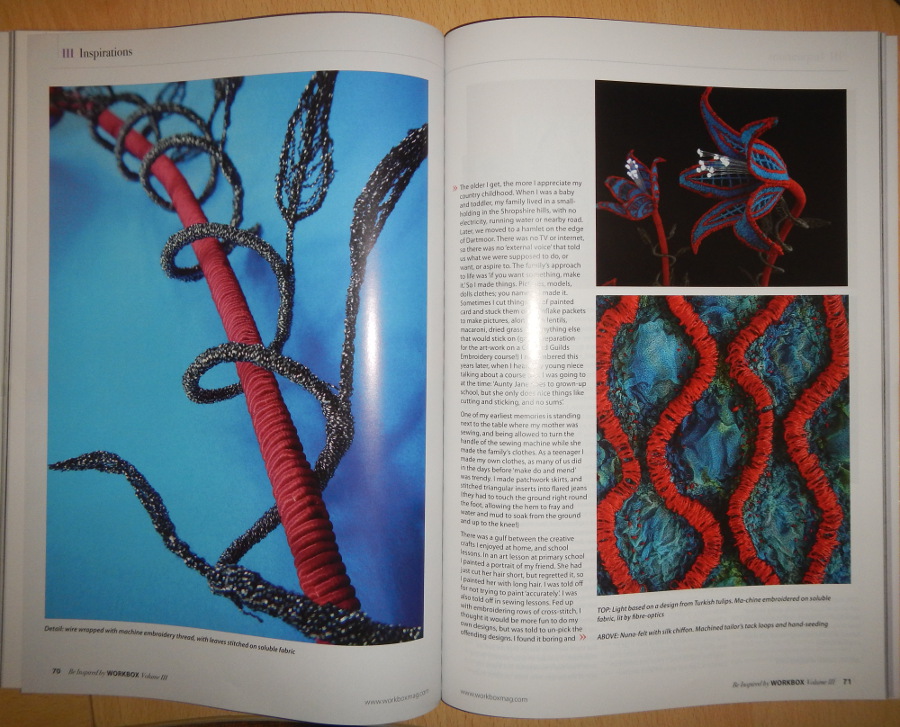
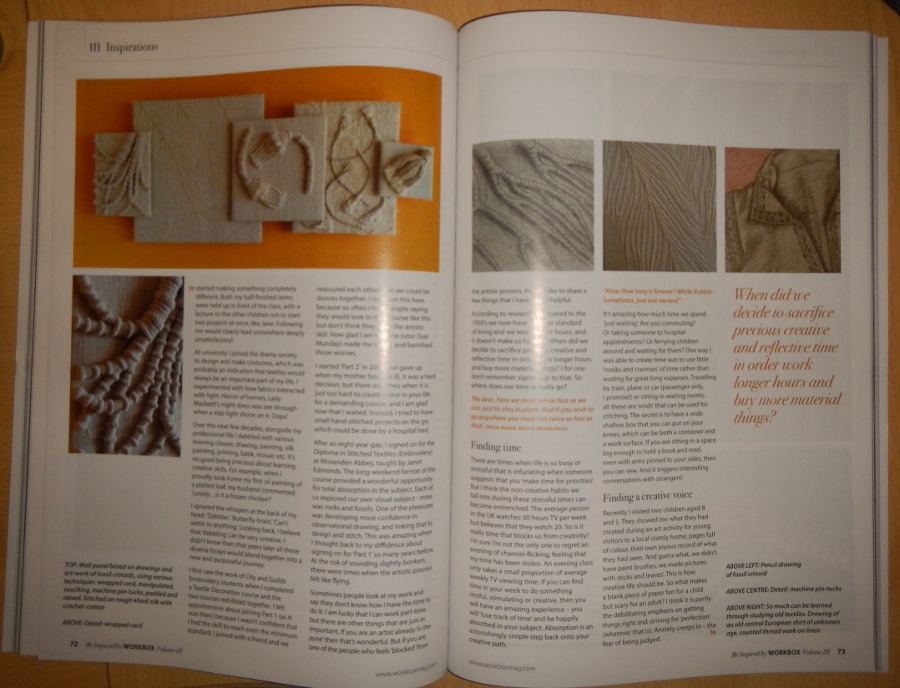
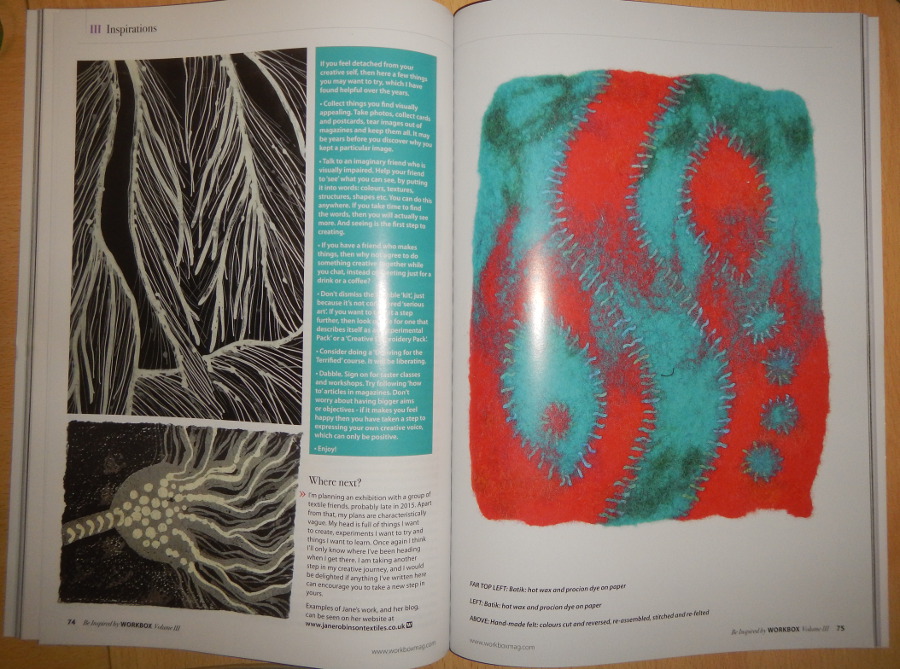
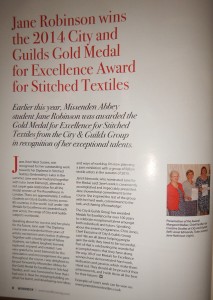
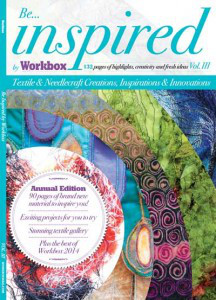
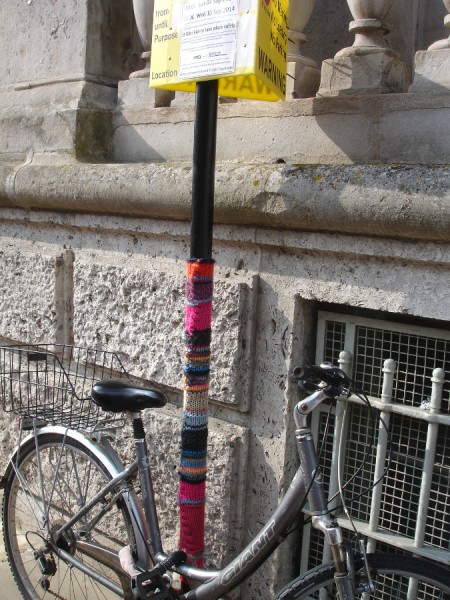
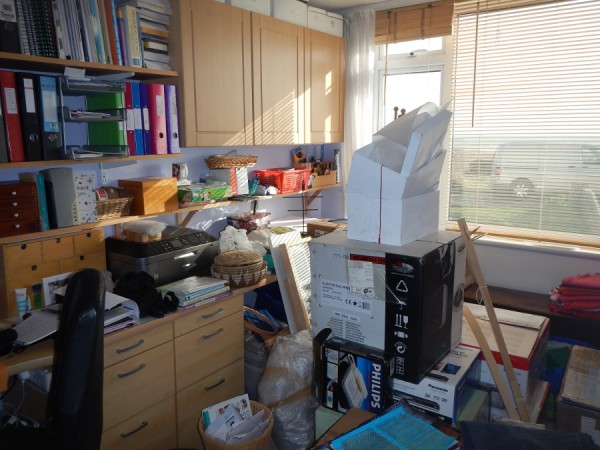


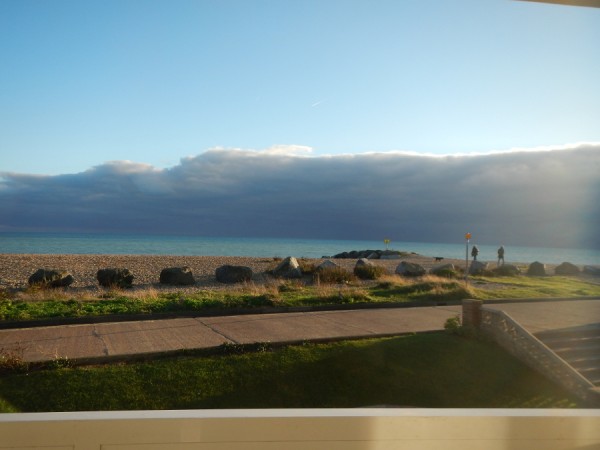
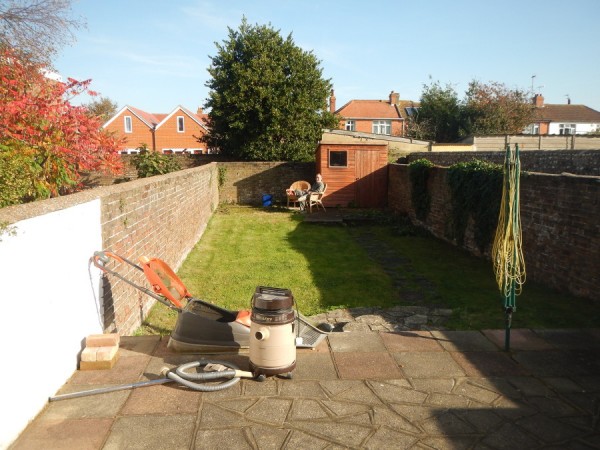
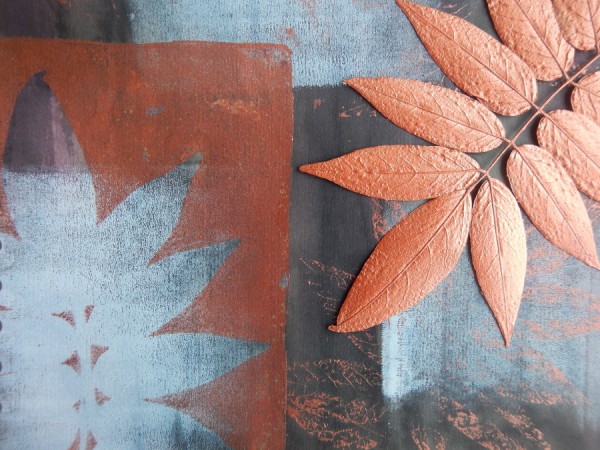
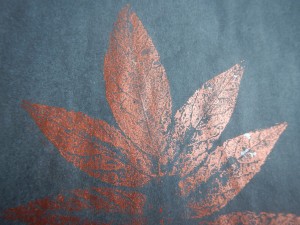

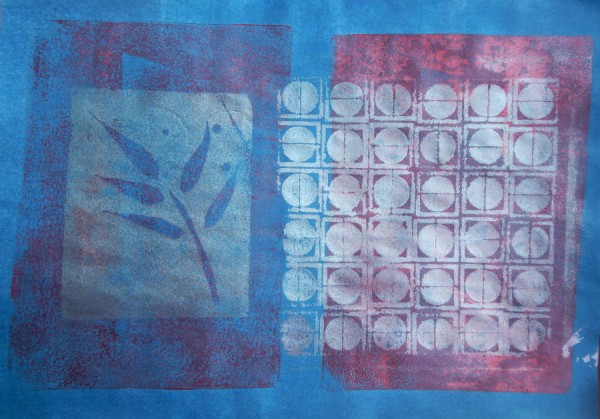
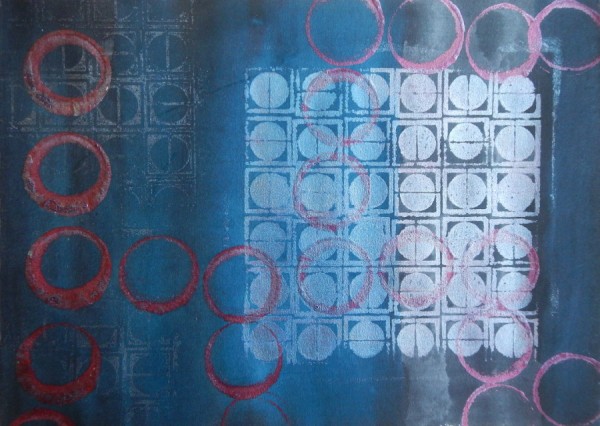
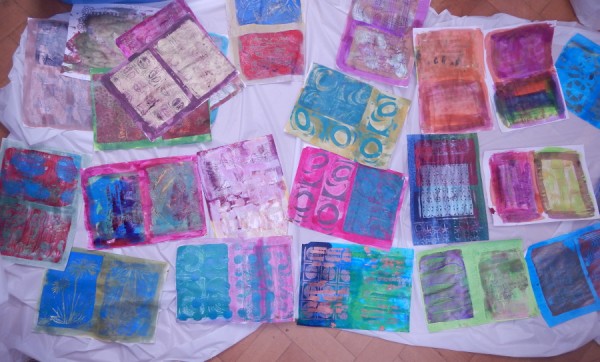
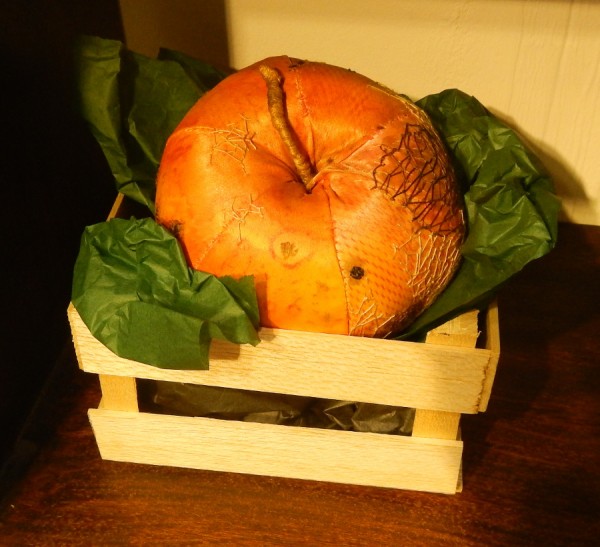
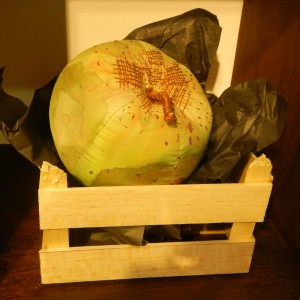
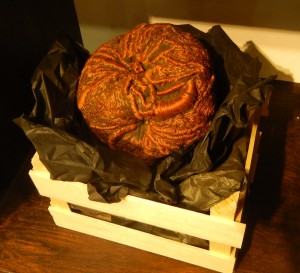
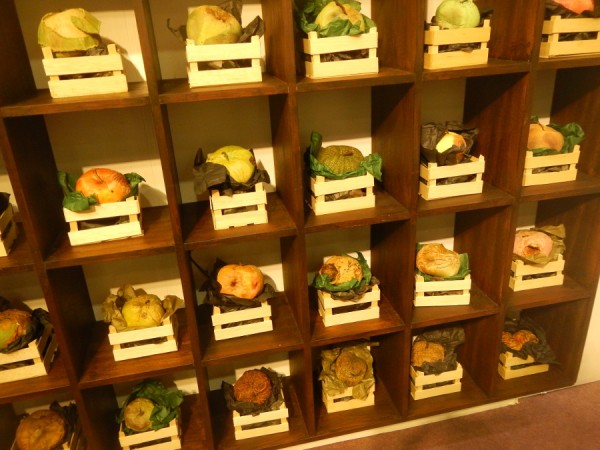
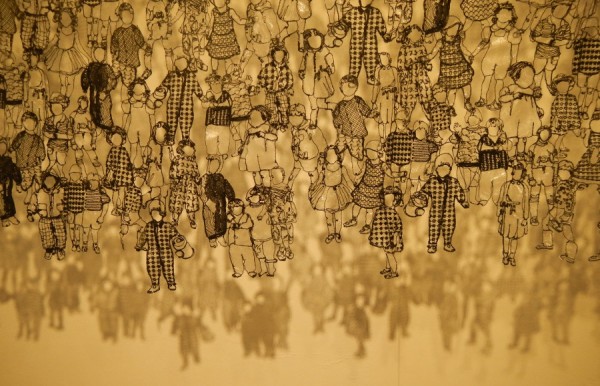
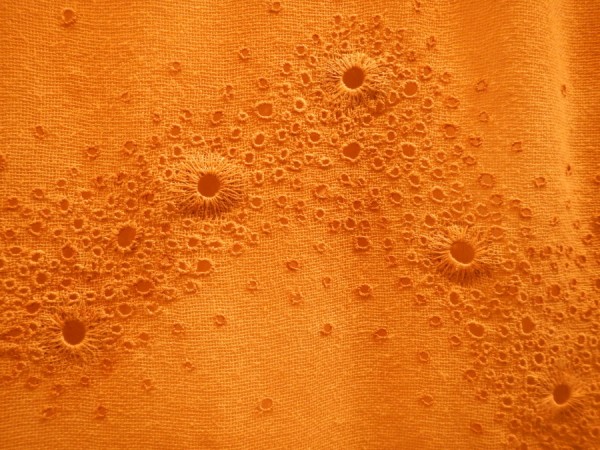
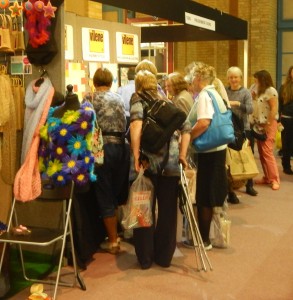
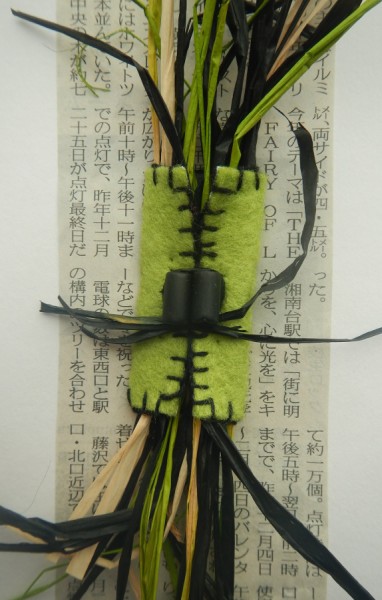
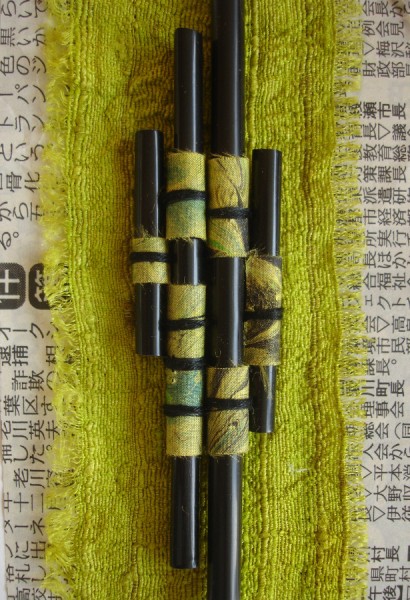
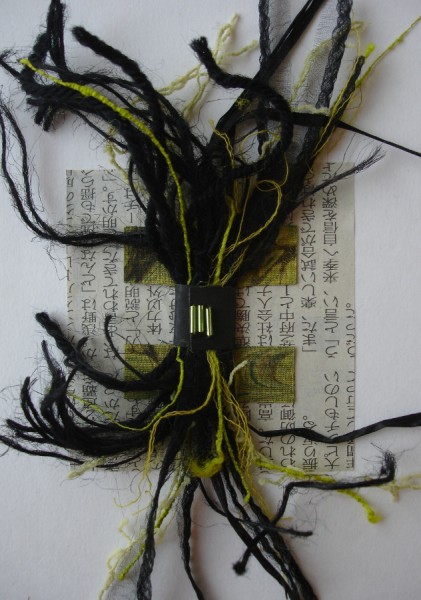
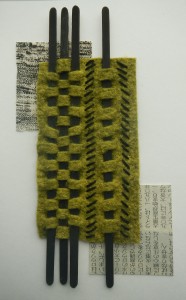
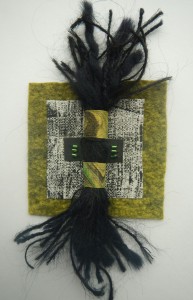
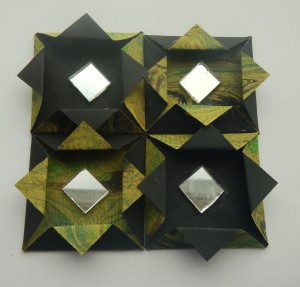
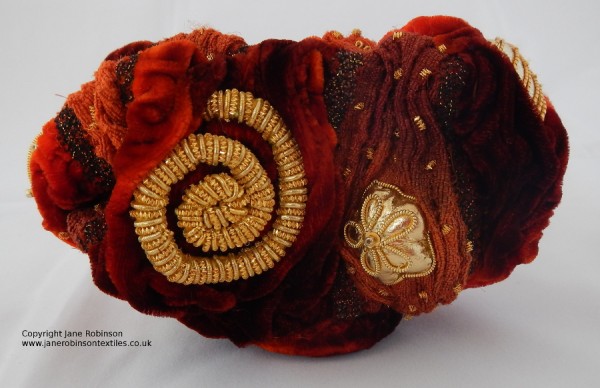
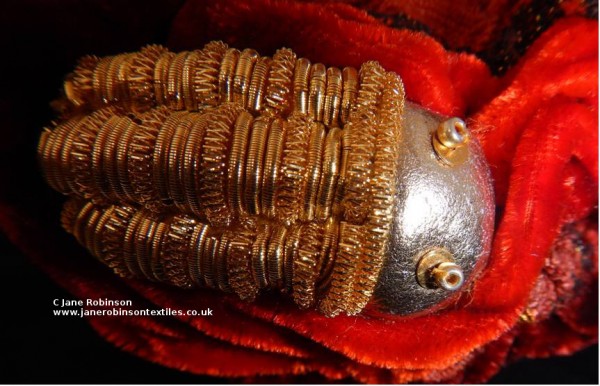
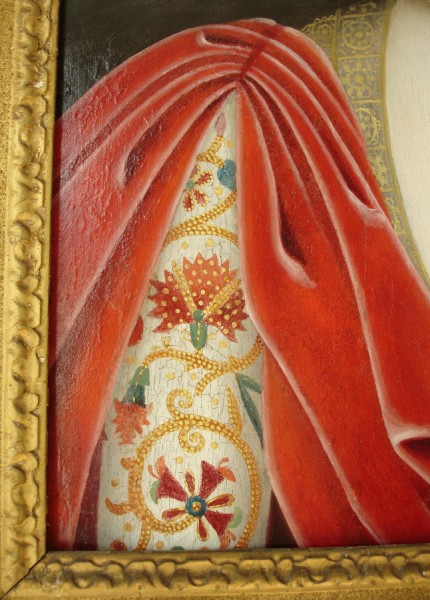
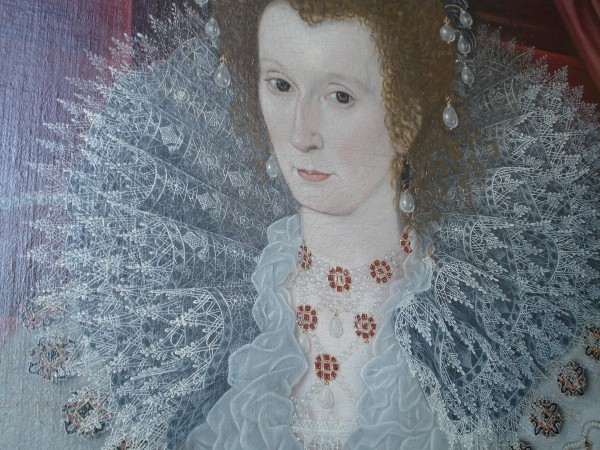
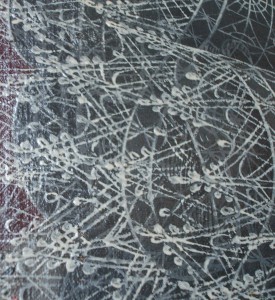
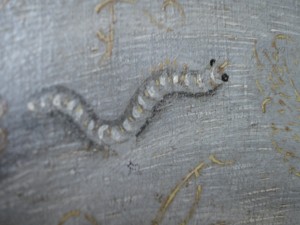
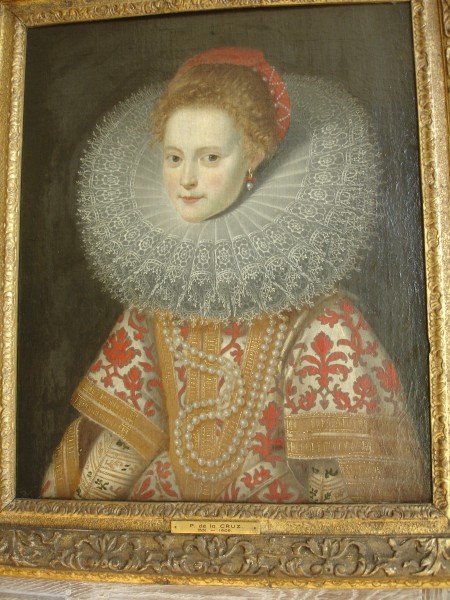






























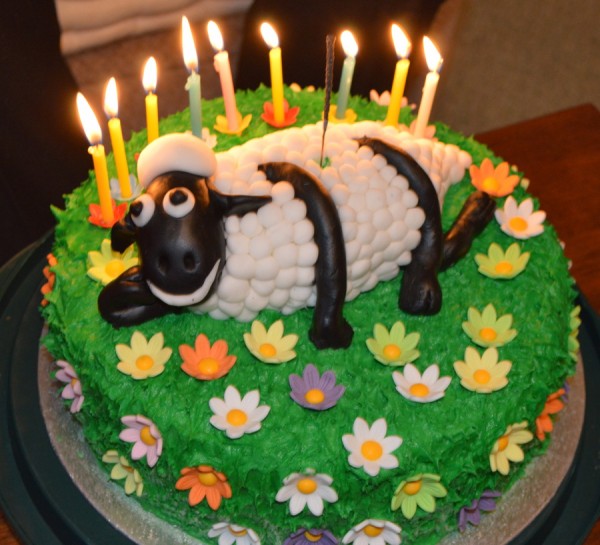
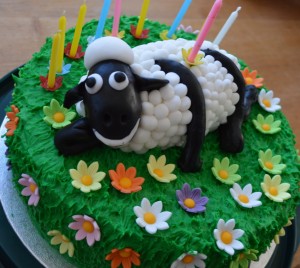
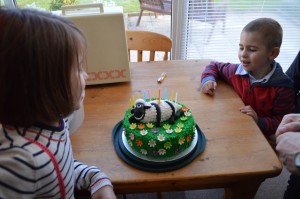 s are courtesy of the local supermarket. Shaun kept letting his head droop onto the grass, so he has a cocktail stick in his neck to help him stay awake. I had two helpers to make the grass and arrange the flowers – Veronika and Milo. And yes, there were a few spare sugar flowers that had to be sampled first.
s are courtesy of the local supermarket. Shaun kept letting his head droop onto the grass, so he has a cocktail stick in his neck to help him stay awake. I had two helpers to make the grass and arrange the flowers – Veronika and Milo. And yes, there were a few spare sugar flowers that had to be sampled first.